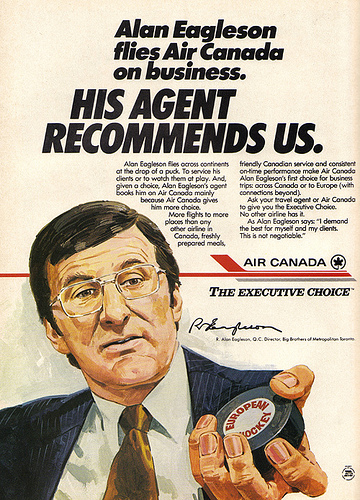By Karen Aney (The Cascade) – Email
Print Edition: January 25, 2012
The NHL All Star game is ridiculous. Sure, it helps generate new interest in what would otherwise be a slump in a long season, but there are many things wrong with it. First, it’s in the middle of a long season. Hockey is a violent sport. The potential for career-ending injury is just a little too high to make its placement a good idea. Second, having fans vote the starting line-up results in – well, it results in having four Senators and a Leaf on a starting line-up of the best players in the NHL today. Laughable. However, one of the most frustrating (and overlooked) parts of the All Star hoopla is where the profits go.
It doesn’t go to a charity. It doesn’t go to upgrading arenas. It doesn’t get spent in honour of tragedies, such as those of last summer. No, it goes to the player pension fund. That’s right. The proceeds from the All Star game go to ensure that these players making millions per year have a comfortable retirement.
The pension plan has a bit of a sordid history. It’s been around since 1947, but was radically changed in 1994. Then, it was discovered that Alan Eagleson, the former head of the NHL player’s association, had withheld millions of dollars from player’s pensions. Since then, the pension payouts and rules regarding them have been undeniably transparent. The amounts to be received, and the rules binding them, are outlined on the NHL’s website in the rulebook: “… for players who have received credit for less than 400 games played, the amount of $8000 CDN per year… for players who have received credit for 400 games played or more, the amount of $12,500 CDN per year.” This does not include the (at minimum) six figure bonus awarded to former players at the age of 55. Another thing to consider is that those 400 games include any games where the player did not play because of injury, or games where the player was a healthy scratch. In other words, Keith Ballard is getting a pretty great deal.
From the time of the first official All-star game, in the 1947-1948 season, the profits have gone towards the pension fund. However, player salaries were drastically different at that time. According to the Hockey Hall of Fame, in 1963 the salary minimum was $7000. Considering inflation, that’s about $51,619.63 today. In the 1966-1967 season, Bobby Orr made just $35,000 per year. With inflation, that’s worth about $258,098.16 today. To compare him to those at the top of today’s field: Alexander Ovechkin, Sidney Crosby, and Evgeni Malkin will each make nine million dollars this year. Yes, $9,000,000. That is more than thirty-four times what arguably one of the greatest players of all time made. It bears consideration that the salary minimum in 1963 was, by all accounts, a drastic jump from the salaries offered during both world wars. To offer a personal anecdote, my own grandfather was drafted to the New York Rangers, but had to turn it down in favour of a factory job in order to provide for his family. In those days, supporting a player’s pension fund made sense. Today, it does not.
The first known professional hockey All-star game was held before the NHL was created, in 1908. It was held in memory of Hod Stuart, a player who had drowned while diving in the off-season. The proceeds went to his family. Another recognized all-star game was in 1933, benefiting Ace Bailey, a Leafs player who was hit so hard by a big bad Bruin that a spectator priest actually read him his last rites on the ice. Though he survived, the proceeds from that year went to him and his family.
After looking at the history and the cold, hard numbers, I’m forced to postulate that supporting a pension plan in an era where players make so much money is ridiculous. Given the tragedies of this past summer, it seems shocking that the profits of this game are not being more aptly directed. Even if it wasn’t given directly to the families of those deceased, why not use it to promote mental health for NHL players? Alternatively, why not donate the proceeds in their entirety to brain injury research? It seems that there are many causes that could be greatly benefited. This fan would much rather see that than ensure that the pockets of players will be lined just a little bit thicker in years to come.


